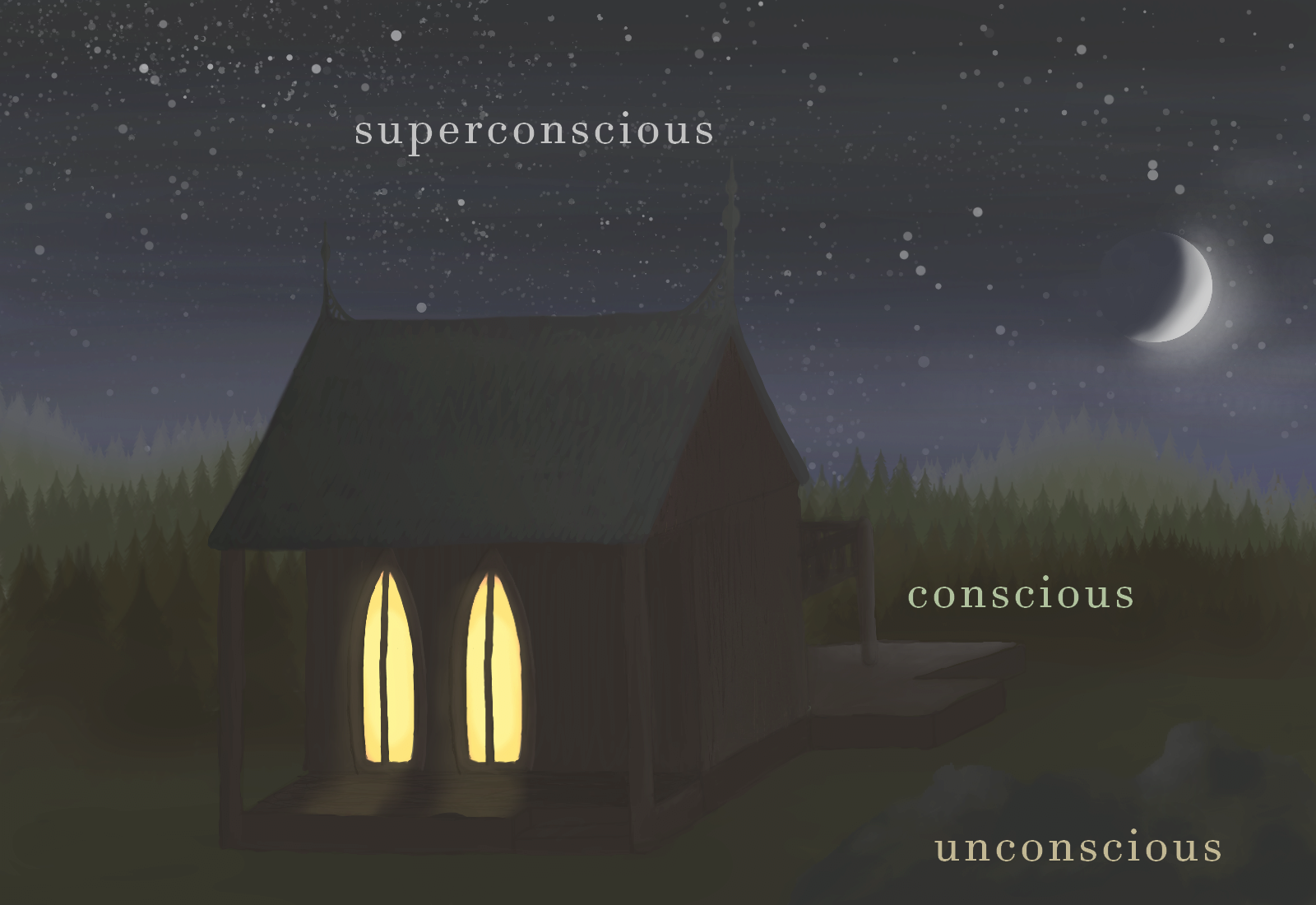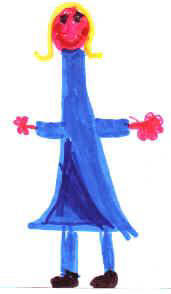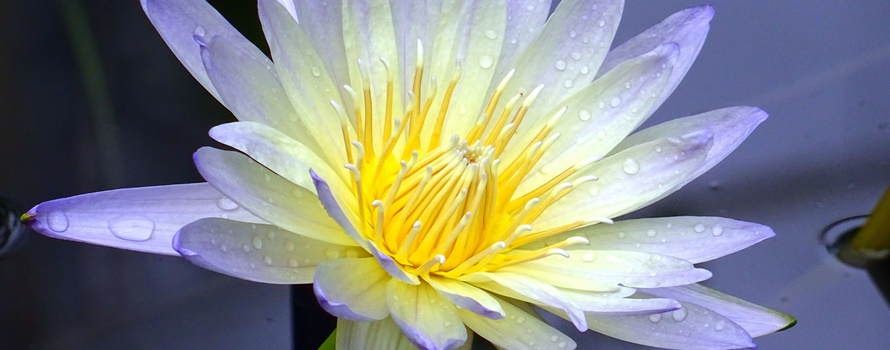Top-Middle-Bottom Symbolism
The Meaning of the Vertical Axis
The top-middle-bottom symbolism not only corresponds to the order of space but also to inner qualities which can be logically derived from this order.
The Top-Middle-Bottom Symbolism as Vertical Aspect of our Habitat
Top: On top is the unequaled bright and spiritual (sun, moon, stars), the source of light that enables us to see.
Middle: The middle represents our sphere of action and movement which is the visible area (conscious).
Bottom: On the bottom (earth) lies the invisible area (unconscious).

Qualities assigned to the Vertical Aspects of our Habitat
Top: breezy, formless, bright, knowing, celestial, spiritual
Middle: surface, formed, colored
This is our field of action that we are conscious of. This sphere of action splits up in two main components:
i. The emotional area represents all the living things like plants and animals.
ii. The mental area represents everything constructive like buildings or technical stuff.
Bottom: fixed, amorphous, dark, ignorant, source of life

Religious and Authoritarian Aspects of the Top-Symbolism
One of the most important impressions of the childhood are the encounters with adults. The small being stares upward to the overbearing adult aspecially the mother and the father. They are tall so that the child has to look up. They know, do and determine everything. From this perspective a religious view of an omniscient, omnipotent and all determinative god comes into being. This childhood imprinting is responsible for the fact that antique and naive religions still exist.
Summary of the Top-Middle-Bottom Space Symbolism:
| top | superconscious | god | heaven | sunlike | caring |
| middle | conscious | human | surface | bright as day | surrounding |
| bottom | unconscious | demon | earth | dark | threatening |
Top-Middle-Bottom-Symbolism of the Human Body:
 Top: head, the intellectual, the recognition
Top: head, the intellectual, the recognition
Middle: hands, chest, left=feeling, right=thinking
Bottom: abdomen, feet, animal, instinctively, unconscious
© Alfred Ballabene (Vienna) translated by Seth

